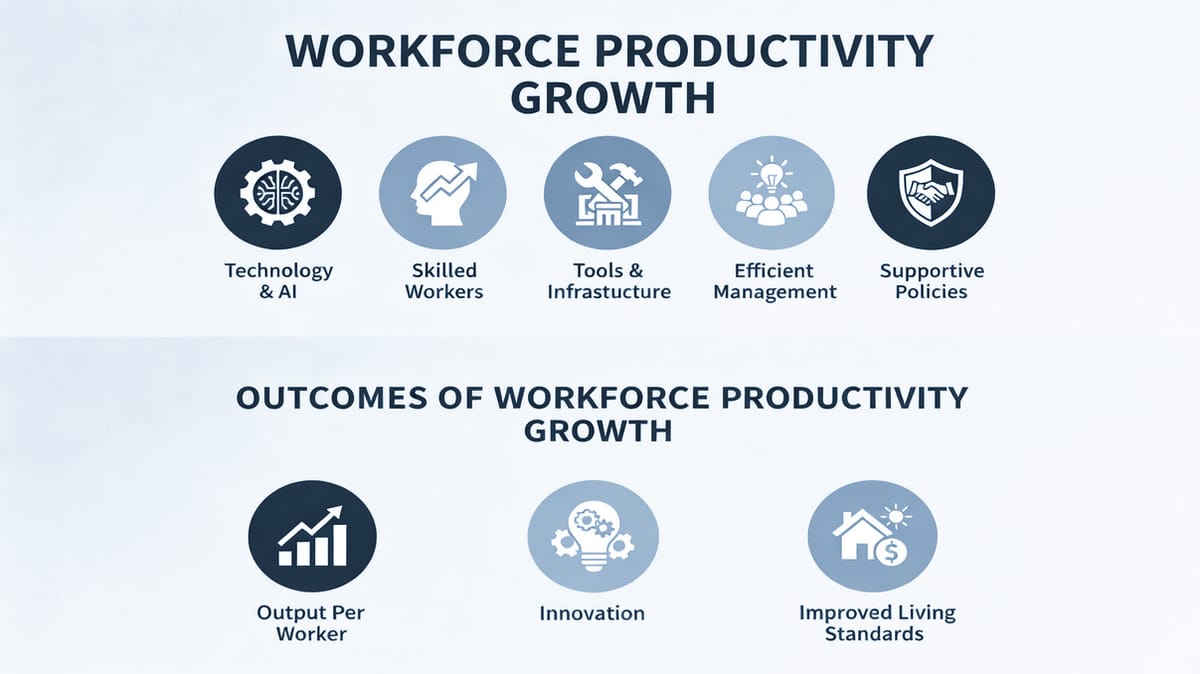Productivity Increase Drivers
Productivity grows through technology and AI, skilled workers, improved tools and infrastructure, effective management, and supportive policies, boosting output per worker, spurring innovation, and raising living standards year after year.

To understand how citizens can benefit from an improved standard of living, it is helpful to understand the main drivers of workforce productivity increases, and to address those drivers.
1. Technology and Innovation
- Automation and AI: Tools that automate routine work, from robotics in factories to artificial intelligence in offices, increase output per worker.
- Digital infrastructure: Faster broadband, cloud computing, data centres, and improved software ecosystems enhance efficiency.
- Research and development: Scientific and industrial innovation generates new products and processes, raising value per unit of labour.
2. Human Capital (Skills, Education, Training)
- Higher skills and education: Better-trained workers are able to produce more value per hour.
- Continuous upskilling and reskilling: As technologies evolve, ongoing training ensures workers can adopt and exploit new tools.
- Health and wellbeing: A healthier workforce is more reliable, innovative, and efficient.
3. Capital Deepening (Tools and Equipment per Worker)
- Machinery and infrastructure: When workers have better tools, they can produce more in the same time.
- Information technology and software capital: Digital capital such as enterprise software or AI platforms boosts knowledge-worker productivity.
- Facilities and infrastructure: Effective transport, logistics, and energy systems reduce wasted time and costs.
4. Organisation and Management
- Business processes and supply chain design: Smarter workflows and leaner processes cut waste.
- Management quality: Strong leadership and decision-making improve resource allocation and motivation.
- Workplace practices: Flexible and well-structured work arrangements, such as remote or hybrid teams, can unlock higher efficiency.
5. Broader Economic and Policy Environment
- Competition and openness: Competitive markets and international trade encourage firms to innovate and improve efficiency.
- Regulation and policy: Policies that support innovation, infrastructure, education, and investment drive national productivity.
- Labour mobility and migration: Efficient allocation of people to jobs ensures skills are matched to needs.
